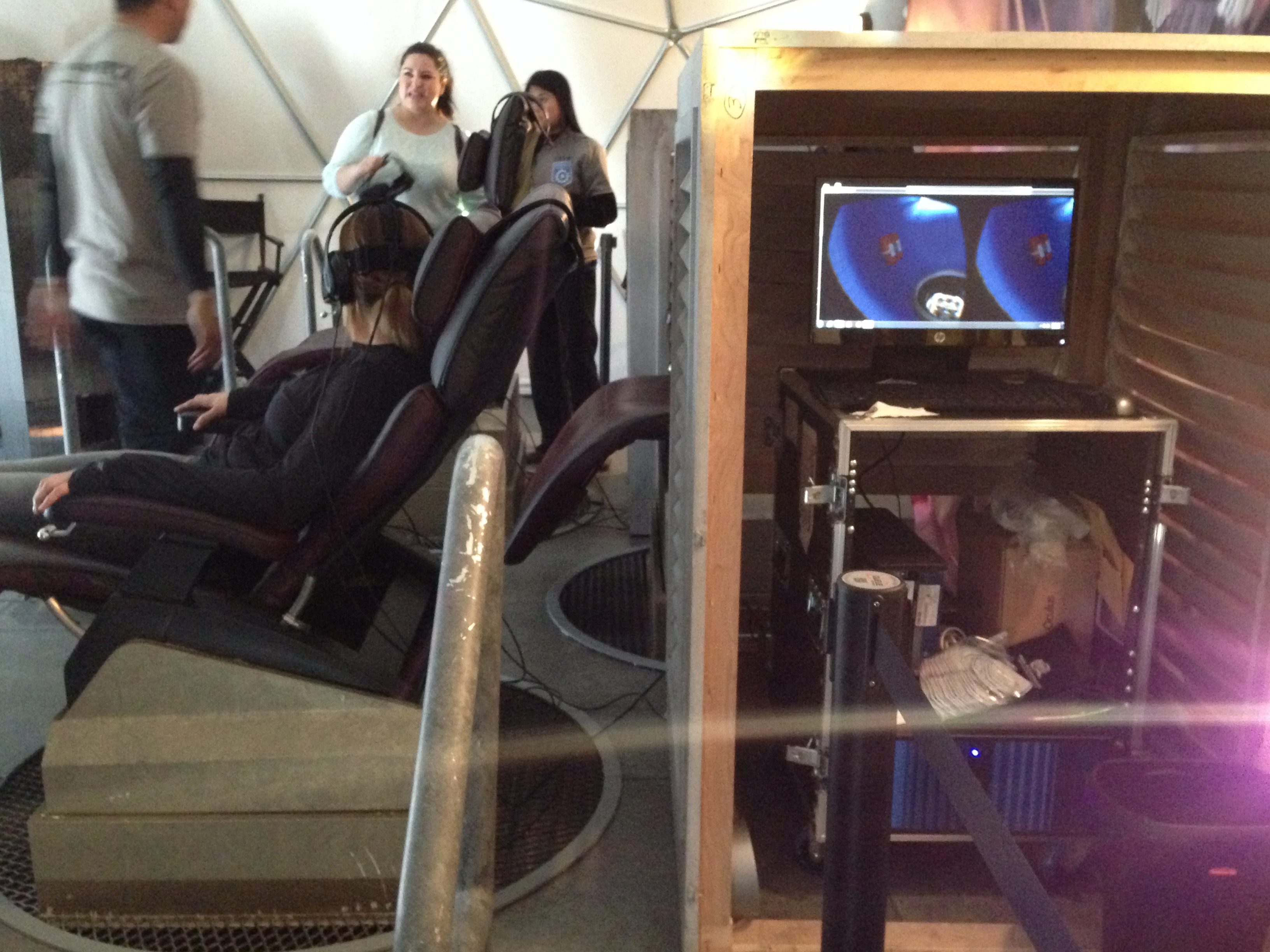
AUSTIN, Texas — What if you could feel the weightlessness of drifting in space, without leaving the ground?
To try it out, I strapped on a virtual-reality (VR) headset and headphones today (March 13) here at the South by Southwest Interactive conference. The demonstration gives people a small taste of weightlessness by putting them in a chair filled with hydraulics while a VR headset transports them into the spaceship from the movie "Interstellar," just as it enters a wormhole that induces zero gravity.
Initially, the virtual-reality headset made me woozy, and it got even worse when I turned my head too quickly. But I soon became immersed in the virtual environment, and the wooziness subsided.
A few minutes into the simulation, as we entered the wormhole, a robot narrator warned that we were entering a zero-gravity environment. The hydraulics in my chair changed their pressure and lowered the base of the chair, which did create a vague sensation of floating. Oddly, the sensation was strongest in my arms and legs, but my internal organs still felt like they were subject to plain old Earth gravity.
The experience was pleasant and slightly otherworldly, but I doubt it truly mimics what it's like to be in space. People who are interested in experiencing the zero-gravity simulation can check it out at the conference starting tomorrow (March 14) at the conference.
Follow Tia Ghose on Twitter and Google+. Follow Live Science @livescience, Facebook & Google+. Originally published on Live Science.
Get the world’s most fascinating discoveries delivered straight to your inbox.

Tia is the editor-in-chief (premium) and was formerly managing editor and senior writer for Live Science. Her work has appeared in Scientific American, Wired.com, Science News and other outlets. She holds a master's degree in bioengineering from the University of Washington, a graduate certificate in science writing from UC Santa Cruz and a bachelor's degree in mechanical engineering from the University of Texas at Austin. Tia was part of a team at the Milwaukee Journal Sentinel that published the Empty Cradles series on preterm births, which won multiple awards, including the 2012 Casey Medal for Meritorious Journalism.


